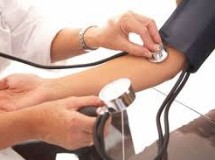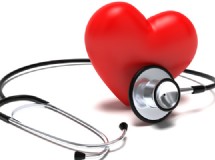Childhood Acute Lymphoblastic Leukemia Treatment (PDQ®): Treatment - Health Professional Information [NCI]-Treatment of Relapsed Childhood ALL
Childhood Acute Lymphoblastic Leukemia Treatment (PDQ®): Treatment - Health Professional Information [NCI] Guide
Immune modulation after transplant to prevent relapse
A number of approaches to prevent relapse after transplantation have been studied, including withdrawal of immune suppression or donor lymphocyte infusion and targeted immunotherapies, such as monoclonal antibodies and natural killer cell therapy.[84,85] Trials in Europe and the United States have shown that patients defined as having a high risk of relapse based upon increasing recipient chimerism (i.e., increased percentage of recipient DNA markers) can successfully undergo withdrawal of immune suppression without excessive toxicity.[86] One study showed that in 46 patients with increasing recipient chimerism, the 31 patients who underwent immune suppression withdrawal, donor lymphocyte infusion, or both therapies had a 3-year EFS of 37% versus 0% in the nonintervention group (P < .001).[87]
Intrathecal medication after HSCT to prevent relapse
The use of post-HSCT intrathecal chemotherapy chemoprophylaxis is controversial.[88,89,90,91]
Relapse after allogeneic HSCT for relapsed ALL
For patients relapsing after an allogeneic HSCT for ALL, a second ablative allogeneic HSCT may be feasible. However, many patients will be unable to undergo a second HSCT procedure because of failure to achieve remission, early toxic death, or severe organ toxicity related to salvage chemotherapy.[92] Among the highly selected group of patients able to undergo a second ablative allogeneic HSCT, approximately 10% to 30% may achieve long-term EFS.[92,93,94]; [57,95][Level of evidence: 3iiA] Prognosis is more favorable in patients with longer duration of remission after the first HSCT and in patients with CR at the time of the second HSCT.[93,94,96] In addition, one study showed an improvement in survival after second HSCT if acute GVHD occurred, especially if it had not occurred after the first transplant.[97]
Reduced-intensity approaches can also cure a percentage of patients when used as a second allogeneic transplant approach, but only if patients achieve a CR confirmed by flow cytometry.[98][Level of evidence: 2A] Donor leukocyte infusion has limited benefit for patients with ALL who relapse after allogeneic HSCT.[99]; [100][Level of evidence: 3iiiA]
Childhood Acute Lymphoblastic Leukemia Treatment (PDQ®): Treatment - Health Professional Information [NCI] - Treatment of Relapsed Childhood ALL
Childhood Acute Lymphoblastic Leukemia Treatment (PDQ®): Treatment - Health Professional Information [NCI] Guide
- General Information About Childhood Acute Lymphoblastic Leukemia (ALL)
- Risk-based Treatment Assignment
- Treatment Option Overview for Childhood ALL
- Treatment for Newly Diagnosed Childhood ALL
- Postinduction Treatment for Childhood ALL
- CNS-directed Therapy for Childhood ALL
- Postinduction Treatment for Specific ALL Subgroups
- Treatment of Relapsed Childhood ALL
- Changes to this Summary (05 / 02 / 2014)
- About This PDQ Summary
- Get More Information From NCI
Immune modulation after transplant to prevent relapse
A number of approaches to prevent relapse after transplantation have been studied, including withdrawal of immune suppression or donor lymphocyte infusion and targeted immunotherapies, such as monoclonal antibodies and natural killer cell therapy.[84,85] Trials in Europe and the United States have shown that patients defined as having a high risk of relapse based upon increasing recipient chimerism (i.e., increased percentage of recipient DNA markers) can successfully undergo withdrawal of immune suppression without excessive toxicity.[86] One study showed that in 46 patients with increasing recipient chimerism, the 31 patients who underwent immune suppression withdrawal, donor lymphocyte infusion, or both therapies had a 3-year EFS of 37% versus 0% in the nonintervention group (P < .001).[87]
Intrathecal medication after HSCT to prevent relapse
The use of post-HSCT intrathecal chemotherapy chemoprophylaxis is controversial.[88,89,90,91]
Relapse after allogeneic HSCT for relapsed ALL
For patients relapsing after an allogeneic HSCT for ALL, a second ablative allogeneic HSCT may be feasible. However, many patients will be unable to undergo a second HSCT procedure because of failure to achieve remission, early toxic death, or severe organ toxicity related to salvage chemotherapy.[92] Among the highly selected group of patients able to undergo a second ablative allogeneic HSCT, approximately 10% to 30% may achieve long-term EFS.[92,93,94]; [57,95][Level of evidence: 3iiA] Prognosis is more favorable in patients with longer duration of remission after the first HSCT and in patients with CR at the time of the second HSCT.[93,94,96] In addition, one study showed an improvement in survival after second HSCT if acute GVHD occurred, especially if it had not occurred after the first transplant.[97]
Reduced-intensity approaches can also cure a percentage of patients when used as a second allogeneic transplant approach, but only if patients achieve a CR confirmed by flow cytometry.[98][Level of evidence: 2A] Donor leukocyte infusion has limited benefit for patients with ALL who relapse after allogeneic HSCT.[99]; [100][Level of evidence: 3iiiA]
SHARE





![Pediatric Supportive Care (PDQ®): Supportive care - Patient Information [NCI]-Overview](https://cdnus.oss-us-west-1.aliyuncs.com/libs/images/NewsJpg/cate_6/072_215x160.jpg)
































